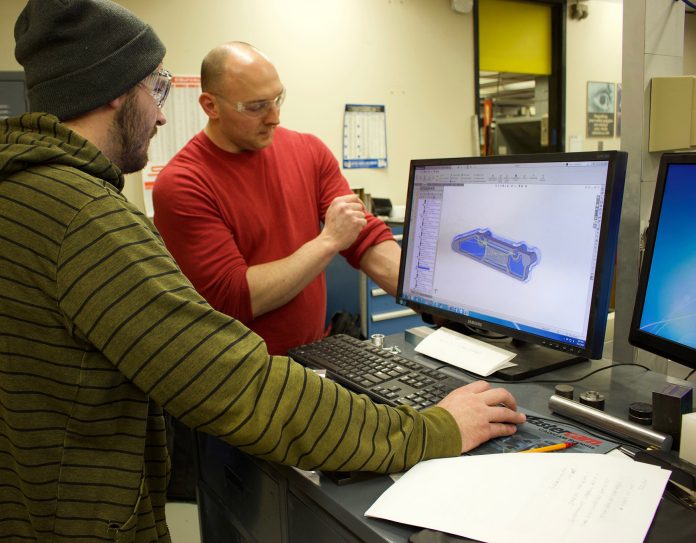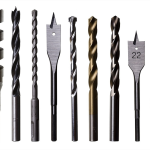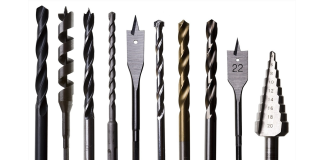Choosing the best CAD CAM software for CNC machining involves considering several key factors such as the complexity of the designs, the level of expertise of the user, compatibility with CNC machines, and budget constraints. Here are some of the top CAD/CAM software options, each with its own strengths and ideal use cases:
Best CAD Cam software for CNC:
- Autodesk Fusion 360
- Target Users: Hobbyists, Small to Medium Businesses, and Education
- Key Features: Integrated CAD/CAM, Easy-to-use interface, cloud-based collaboration, and a wide range of tools for modeling, simulation, and fabrication.
- Pros: User-friendly, versatile, and offers a comprehensive set of tools for product development.
- Cons: Limited functionality for very complex machining tasks.
- SolidWorks CAM
- Target Users: Professionals in product design and manufacturing
- Key Features: Robust CAD capabilities, seamless integration with SolidWorks, and excellent for creating detailed 3D models.
- Pros: High precision and control, ideal for complex designs.
- Cons: Expensive and requires a good hardware setup.
- Mastercam
- Target Users: Professionals and large businesses
- Key Features: Wide range of CAM tools, efficient multi-axis machining, and excellent toolpath control.
- Pros: Ideal for high-precision and complex machining tasks.
- Cons: Steep learning curve and relatively high cost.
- Autodesk AutoCAD
- Target Users: Architects, engineers, and construction professionals
- Key Features: Powerful 2D and 3D CAD tools, customization with add-on apps, and industry-specific features.
- Pros: Great for detailed designs and technical drawings.
- Cons: Less focused on CAM and more on CAD.
- RhinoCAM
- Target Users: Designers and machinists focusing on artistic and complex geometries
- Key Features: Integrates with Rhinoceros 3D, great for complex shapes and surfaces.
- Pros: Excellent for artistic and non-standard shapes.
- Cons: May not be as efficient for standard machining tasks.
- GibbsCAM
- Target Users: Medium to large manufacturing companies
- Key Features: Powerful CAM tools, excellent for multi-axis and high-volume production.
- Pros: High efficiency and control in production.
- Cons: Can be expensive and complex for smaller operations.
- CAMWorks
- Target Users: Small to large businesses in manufacturing
- Key Features: Seamless integration with SolidWorks, feature-based machining, and automation tools.
- Pros: Reduces programming time and is efficient for varied manufacturing tasks.
- Cons: Learning curve for those not familiar with SolidWorks.
- HSMWorks
- Target Users: Small to large businesses in manufacturing and design
- Key Features: Integration with SolidWorks and Inventor, efficient toolpath generation, and support for a wide range of CNC machines.
- Pros: Great for high-speed machining and complex parts.
- Cons: Requires familiarity with SolidWorks or Inventor.
- TinkerCAD
- Target Users: Beginners, educators, and hobbyists
- Key Features: Simple, browser-based CAD software, easy to learn and use.
- Pros: Free and great for learning the basics of CAD/CAM.
- Cons: Limited in terms of professional and complex design capabilities.
- FreeCAD
- Target Users: Hobbyists and those looking for an open-source solution
- Key Features: Parametric 3D modeler, open-source, and highly customizable.
- Pros: Free and flexible.
- Cons: Not as refined or feature-rich as commercial offerings.
Choosing the Right Software
- Assess Your Needs: Consider the complexity of your projects and the level of detail required.
- Compatibility: Ensure the software is compatible with your CNC machinery.
- Budget: Factor in the cost of the software and any additional costs such as training or hardware upgrades.
- Skill Level: Choose software that matches your or your team’s expertise level.
Conclusion
The best CAD/CAM software for CNC machining varies based on individual needs and preferences. For beginners or small businesses, Autodesk Fusion 360 or TinkerCAD might be suitable, whereas professionals might opt for SolidWorks CAM, Mastercam, or GibbsCAM for more complex tasks. Always consider the compatibility with your existing systems and the skill level required to efficiently use the software.
Best Price For Cad Cam Software For CNC:
Finding the best price for CAD/CAM software requires a detailed understanding of the features offered by different software and how they align with your specific needs. Prices can vary significantly based on factors such as the complexity of the software, the size of your business, and the level of support and updates provided. Below is an overview of some popular CAD/CAM software options, their typical pricing models, and how to determine the best value for your needs.
Autodesk Fusion 360
- Target Users: Hobbyists, small to medium businesses, educators
- Pricing Model: Subscription-based, with free licenses for students and educators. Annual subscription costs around $500, but prices may vary.
- Value Analysis: Offers a comprehensive set of tools for CAD, CAM, CAE, and PCB at a competitive price. Ideal for users who need an all-in-one solution.
SolidWorks CAM
- Target Users: Professionals in product design and manufacturing
- Pricing Model: Typically bundled with SolidWorks packages. The price can range from $4,000 to $8,000 for a perpetual license, with additional maintenance fees.
- Value Analysis: High-cost option, but offers advanced features and integration with SolidWorks. Best for users who require detailed and complex modeling capabilities.
Mastercam
- Target Users: Professionals and large businesses
- Pricing Model: Perpetual license ranging from $4,000 to $40,000 depending on the modules and features required.
- Value Analysis: A high-end option ideal for complex and precise machining. The cost is justified for businesses that need top-tier CAM capabilities.
Autodesk AutoCAD
- Target Users: Architects, engineers, construction professionals
- Pricing Model: Subscription-based, costing approximately $1,775 per year.
- Value Analysis: Focused more on CAD than CAM. Ideal for users requiring robust 2D and 3D CAD capabilities.
RhinoCAM
- Target Users: Designers focusing on complex geometries
- Pricing Model: Perpetual license, with prices starting around $1,000 for basic versions.
- Value Analysis: Suitable for artistic and intricate designs, providing good value for specialized applications.
GibbsCAM
- Target Users: Medium to large manufacturing companies
- Pricing Model: License cost typically starts from around $8,000, with additional costs for advanced modules.
- Value Analysis: Efficient for high-volume and multi-axis machining, offering value to businesses with specific high-end requirements.
CAMWorks
- Target Users: Small to large businesses in manufacturing
- Pricing Model: Integrated with SolidWorks; the total cost can range from $2,500 to $15,000 depending on the features.
- Value Analysis: Offers time-saving features and automation, providing good value for regular users of SolidWorks.
HSMWorks
- Target Users: Users of SolidWorks and Autodesk Inventor
- Pricing Model: Included with the subscription to Autodesk’s Product Design & Manufacturing Collection, which costs around $2,720 per year.
- Value Analysis: A good choice for existing users of SolidWorks or Inventor, offering integrated CAM tools within these platforms.
TinkerCAD
- Target Users: Beginners, educators, and hobbyists
- Pricing Model: Free
- Value Analysis: An excellent starting point for beginners, offering basic CAD/CAM capabilities at no cost.
FreeCAD
- Target Users: Hobbyists and those looking for an open-source solution
- Pricing Model: Free
- Value Analysis: Offers flexible and customizable tools for those who prefer an open-source solution.
Tips for Finding the Best Price
- Free Trials and Educational Licenses: Many CAD/CAM software providers offer free trials, and educational licenses can significantly reduce costs for students and educators.
- Bundled Packages: Purchasing software as part of a bundle with other tools or services can offer cost savings.
- Subscription vs. Perpetual Licenses: Consider the long-term costs of subscriptions versus the upfront cost of a perpetual license.
- Negotiate with Vendors: Especially for businesses, negotiating with software vendors can lead to better pricing or additional features.
Conclusion
The best price for CAD/CAM software depends on your specific needs, budget, and the scale of your operations. For individuals and small businesses, options like Fusion 360, TinkerCAD, or FreeCAD might offer the best value. Larger businesses and professional users may find the advanced features of SolidWorks CAM, Mastercam, or GibbsCAM more suitable, despite the higher cost. Always consider the total cost of ownership, including training, support, and updates, when evaluating software prices.






